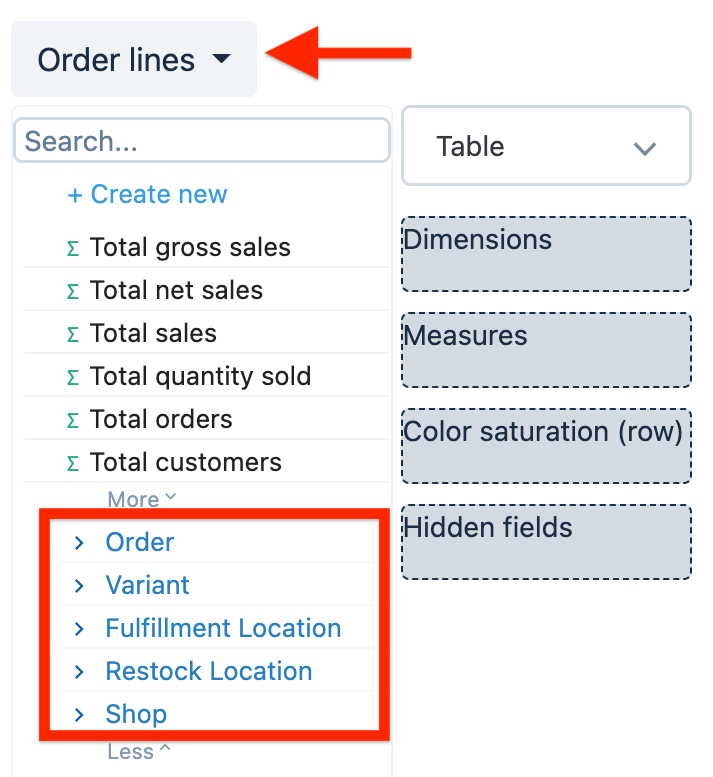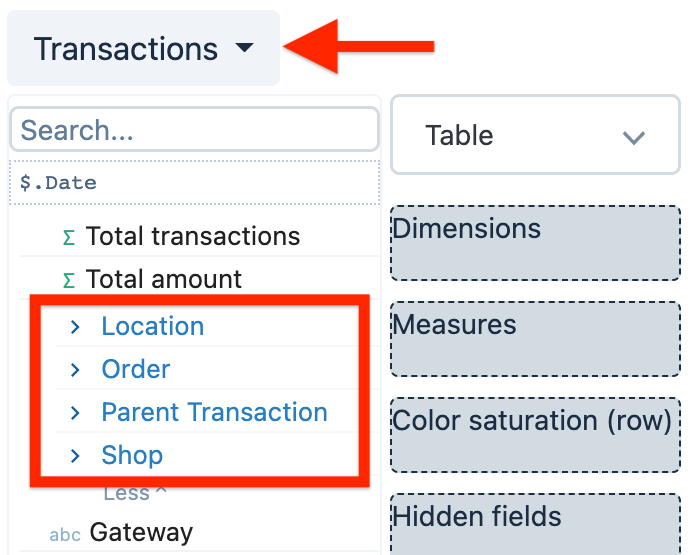The root entity (root table) drives which fields are usable
In the field selector, you can choose any field from the root entity. You can also expand related entities and choose one of their fields.
Example: Let's imagine a simple data model with the following entities: Orders, Products and Customers
If you wanted to build a report Total orders by month, you would choose Orders as the root entity. This way, you can use any field from the Order entity on your report, such as the Date and the Total Orders.
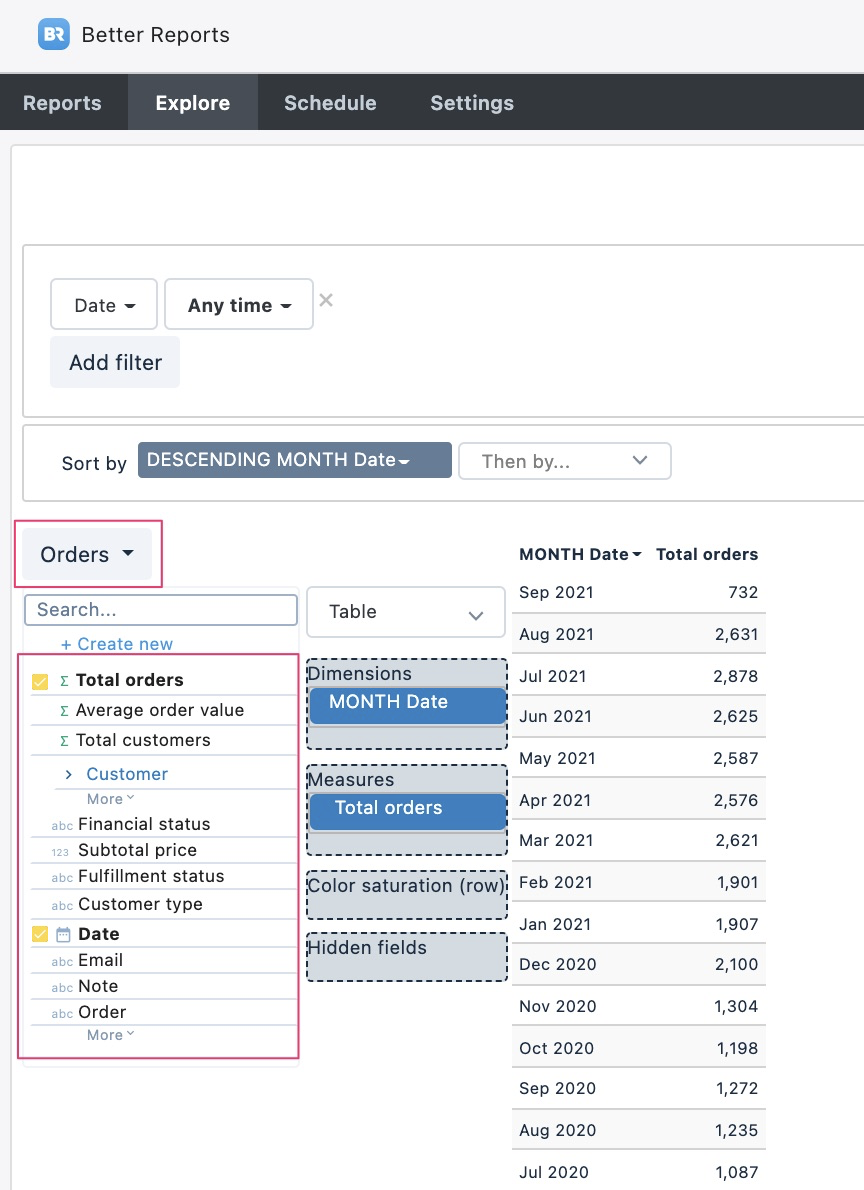
However, if you wanted to build a report Total products by product type, you would choose Products as the root entity.
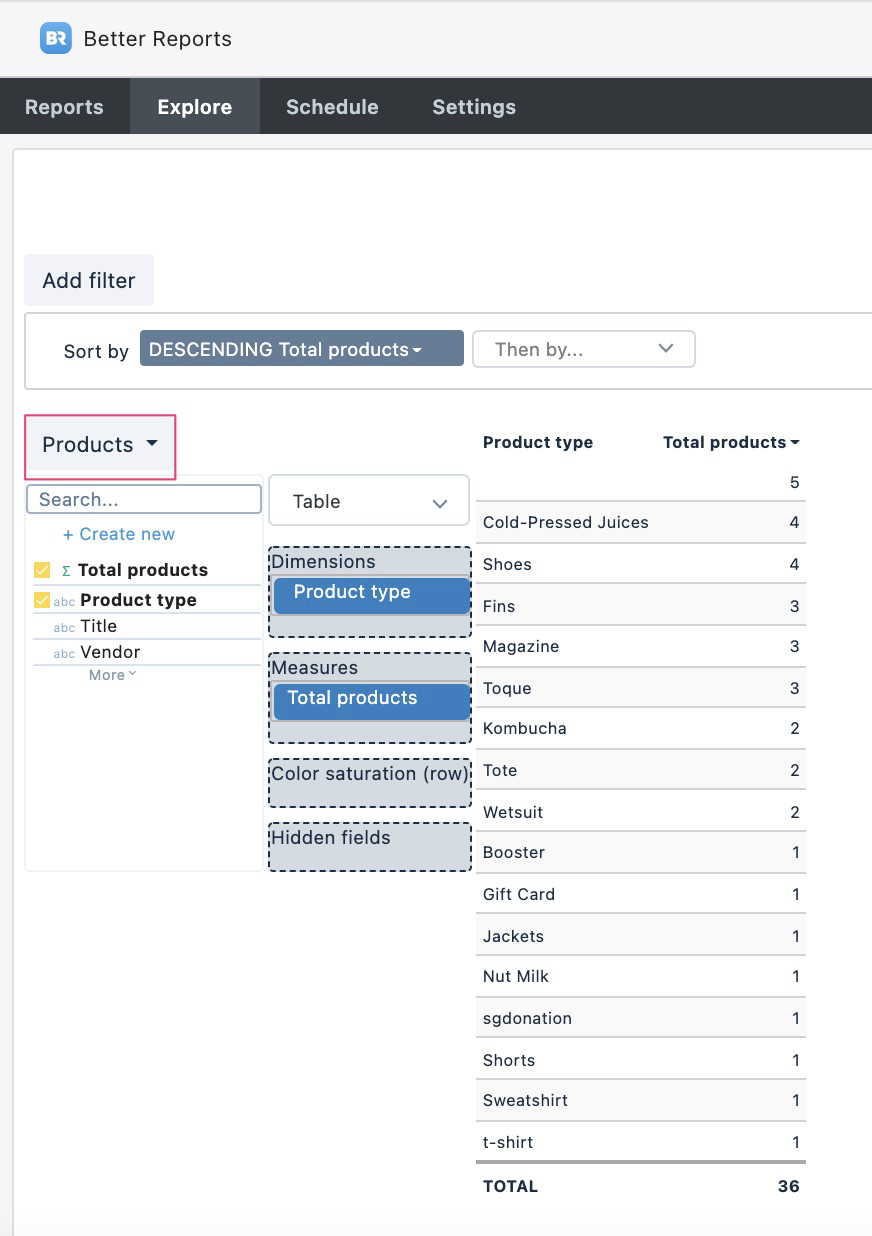
Below is the list of the commonly used root entities (tables):
Order lines and Orders tables
Root entities used for sales reports:
- Order lines: used for any sales report requiring product detail or refund-related information and financial metrics - total sales, shipping, discounts, etc.
- The Date field rooted in this table shows the sale or refund event date.
- Orders: used for sales without line item details. In this table, you only have access to data concerning the order as a whole.
- The Date field rooted in this table shows the date the order was processed.
Customers table
To access the information directly linked to all customers (including those who have not placed an order).
To create a report for customers that have placed at least 1 order, you should use the Orders or Order lines table.
Transactions table
Used to report on the transaction data with gateways and order number. You cannot access line item detail from this table since a transaction is done against an order and not against an item.
The gateway fee is also available for certain gateways, such as Shopify and Paypal.
Product variants and Inventory levels tables
Root entities used for inventory reports:
- Product variants: used for current store-wide inventory, with product and variant data, variant options, product status, etc.
- Inventory levels: used for current inventory at inventory locations.
Expanding related entities
You can also use fields that belong to entities related to the root entity.
For example, in the screenshot below, Orders is the root entity. Because there is a relation between Order and Customer, you can expand the Customer table and use the Customer status field on your report.
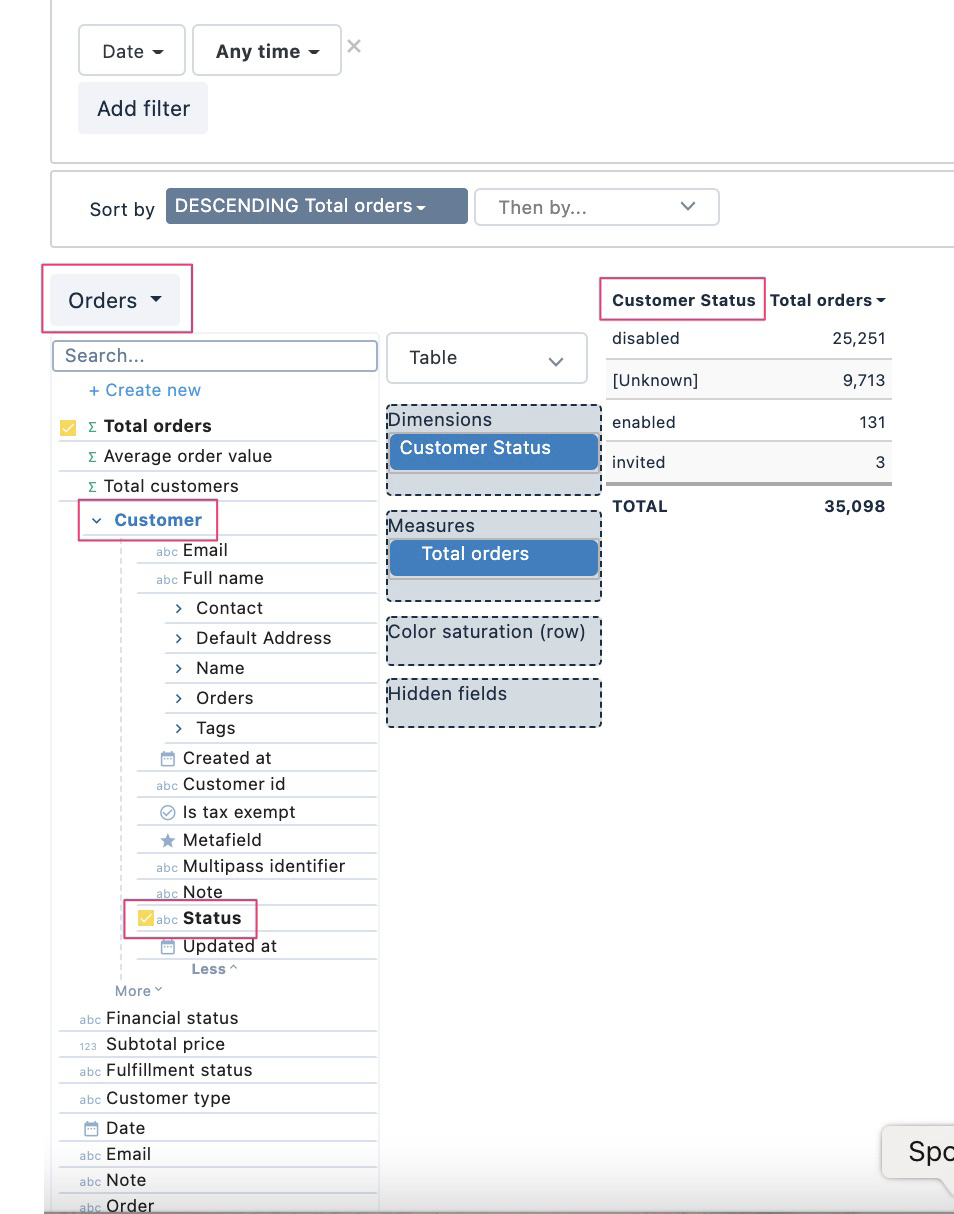
The related entities available will differ from one root table to another.
From any root table, you can access the related entities, which are quickly identifiable by their blue color.
For example:
